On Thursday 2nd May 1922, The Illustrated Oxford Journal reported the opening of new public baths in Paradise Square, St Ebbe’s. ‘The baths should fulfil a long felt need in the St Ebbe’s District, where houses fitted with baths are at a premium. The moderate charge of 3d should make the baths very popular.’
They must have lived up to expectations. Forty years later these were the baths that my mother frequented, with me and my two older brothers in tow. Our house in Headington Quarry, like those in St Ebbe’s, had no bathroom. And although a quick splash at the kitchen sink was our everyday means of washing, on special occasions we’d take the bus into town for a proper soak at the public baths in Paradise Square.
My mum used to joke we were bathing in paradise – the name the only reminder that this area south-west of the city wall was once occupied by groves of trees, gardens and orchards used for quiet contemplation by the medieval Greyfriars. Entering the brick building through a set of double doors, we’d be greeted by a long corridor, with cubicles on either side, each fitted with a bath. The water was controlled from the outside by a friendly caretaker who would bang on the door asking if you needed more hot or cold. We children would bathe first, and once we were done, it was my mother’s turn. Happy times.
There had been other public bath houses in Oxford. Pretty much as soon as we understood the correlation between cholera and clean water, efforts had been made to encourage us all to keep clean. The earliest facilities were opened in 1827 in St Clements (where Bath Street still is) a stylish affair filled not only with bathtubs and showers but also ‘an elegant saloon, furnished with daily papers and periodicals’ and an eighty-foot swimming pool with a fountain, all constructed out of bath stone. There were even steps down to the river for customers arriving by boat. This was long gone even by my time. As was another 19th century bath house on Castle Street, a place which never gained the confidence of the locals after an explosion in the boiler room on its opening day killed two people including a nine-year old child. But the need was clearly there as other public baths were also installed in Merton Street, Albert Street in Jericho, Catherine Street in Cowley, and Lake Street, which was the last of the public baths to eventually close in Oxford in 1966.
The Paradise Square baths had shut its doors a year earlier. By this time the area around it had been so neglected that it was condemned as insanitary. It had also been earmarked for redevelopment. 900 or so houses, shops, and local businesses were demolished over the next few years, making way for the first Westgate Shopping Centre and one of the greatest acts of vandalism in the city to this day. Walking through the vast concrete walkways shot with escalators and advertisements for escape rooms, cinemas and rooftop restaurants of Westgate’s latest incarnation, it’s hard to believe that this was once a tightly knit community of terraced housing and might with some care and imagination have looked like Jericho does now. A stone’s throw from the grand buildings of Christ Church, it was the expansion of the University in the 19th century that pushed the workers that served it from the centre to St Ebbe’s. 150 years later, their descendants were moved further out again.
Scurrying across the much-widened Norfolk Street where buses swing round past John Lewis on to Speedwell Street, I make my way to where I think the baths must have stood. Here I find a newly erected hotel, the Premier Inn, standing alongside some high end luxury apartments. In truth, there’s not much left from what went before. The old vicarage building from 1865 remains, (now the Oxford Centre for Anxiety Disorders and Trauma) on what was the central space in the square, still with a pretty garden attached. There’s a blue plaque on its wall remembering John Stansfeld, the Rector of St Ebbe’s, whose idea the baths were and whose tireless attempts to improve the living conditions of his parishioners included buying land on Shotover for them to enjoy holidays in the country.
There’s a marvellous once monthly event at MOX (The Museum of Oxford) called Memory Lane. Run by Annabel Fleming it’s here in a session packed with pensioners and people with a penchant for local history that I encounter the wonderful Pam Tuckwell (more of which at another time). Knowing I am interested in the Paradise Square baths, she invites me to meet with her great friend Janice Stewart. Jan was born in Bridport Street in 1947 not far from Paradise Square. She attended St Ebbe’s Primary School, situated at that time just south of the Vicarage, and the streets surrounding it were her playground. One of the many places Jan’s mum worked as a cleaner was the Paradise Square baths and Jan and her sister Diane often went too. A more generous, kind and genuine person it would he hard to find. And so, over a cup of tea and a great many laughs, she fills me in on what it was like growing up in what was once called Paradise.
“Bridport Street was where the gasometers were. At one end of the street. They went up and down with whatever gas there was left in them. Our four houses that were joined together were built in 1888 – it was carved into the brickwork. There was Blackfriars Road, Bridport Street and Dale Street, and the other streets around here were collectively known as The Friars.
My Gran and Gramp lived in Blackfriars Road – he was a drayman working at Morrell’s Breweries. He lifted the barrels on to the wagon, and delivered them to the different pubs. There was one on every corner in St Ebbe’s. My dad worked at Pressed Steel. The first fridge they made in the 50’s was called a Frigidaire. And because he worked on them, we were one of the first people to have one. It was a lovely yellow fridge with a black handle and when you pulled it down, inside there was an ice box. Before that we used a wooden larder that stood outside by the back door. That’s where you kept your meat and butter. The toilet was outside. My mum had two coppers, one was heated by a fire underneath and that was for doing the washing. And the other was heated by gas – this was the one that heated the water for when we used the tin bath that hung outside the back door alongside the larder. It had to be filled up by the tap and then tipped into the bath. We all had to share the water. We all wanted to go first! Then we had to ladle out the water with a saucepan – there was no plug to pull.
My mum always cleaned. She worked on the staircases looking after the boys in the colleges. She also used to work for a big house on the Banbury Road, and when I was off poorly I’d go with her and sit while she did the housework. I must have been about 13 when she went to clean at the baths in Paradise Square. When mum worked there it was easier for me and my sister to go with her to wash. We took our own towel and lifebuoy soap. They filled the bath up from the outside and when you went in you tested the water to see if it was alright. They’d say 20 minutes and if you were in a bit longer they’d bang on the door and shout, “come on, out!” And then in between my mum would go in and clean before the next person went in. I remember the baths were always spotless.
There was no greenery around the houses – we just played on the street and around the two squares we called the ‘Tannies’*. Hop-scotch, hide and seek and nick nock nanny, knocking on doors and running off. We used to tie the doorhandles or two houses together, knock and then watch from a distance when the people inside couldn’t get out. (laughs) . We were naughty but never nasty naughty.
We lived at 26A. There was an alleyway that ran from the front to the back of the house, and my bedroom was over the arch. In the winter it got so cold it had to be closed off and I had to move in with my sister. The coal was kept under the stairs in the living room and when the river at the bottom of the road was up it would come under the houses and soak the coal. That’s when the cockroaches came out. We’d go out at night and my dad would shout, “Ready?” And we’d think, “yes – shoe off” and we’d have one shoe on and one off and we’d open the kitchen door, put the lights on – “right go!” says my dad and the cockroaches would be running across the floor and we’d try and get as many as we could with the shoe – they’d come out of the coal hole – and the dead ones my dad would put them on the fire. It was very damp in there then. One day my sister went through the floorboards. The Council hadn’t maintained them properly. My dad went up to the Council offices to complain, gave them a few choice words and got banned. It wasn’t right. But the council let the whole place run down. The whole area used to flood, but they never did anything about it. We used to put boards across the roads so you could get out of your houses and into town.
We stayed at the house until 1965. There was only two houses left when we moved – Mr and Mrs Kent and us. My mum didn’t want to move – none of us wanted to move but there was nothing around us but derelict houses. They were all council property, so they had to relocate you. All our family were from around St Ebbes. Nobody had anything but everybody shared. We didn’t lock our back door – if someone was out of work the whole community would help them. My dad was in Burma in the war and got recurring malaria and when that happened he couldn’t work. One Christmas he was so ill we couldn’t get a Christmas dinner. All our money went on the rent. My mum was very distressed. My mum’s sister Aunt Laura who lived in Jericho bought up a chicken. That’s how people helped each other. When we were all moved away that’s what everyone missed.
We moved up to Templars Rd estate near the park in Cutteslowe. My grandparents had gone there already and my mum didn’t want to go to Blackbird Leys, which was the other place on offer, as it was too far. We got a brand new house. I was 17 and my sister 22. It was lovely. There were eight houses built by a private company and the company went bust and the council bought them. We opened the front door and my sister went straight up the stairs and said, “we’ve got a bathroom. I’m having the first bath.” And I said, “no you’re not, I am.” It was heaven.”
Or perhaps paradise.
*Maybe after the tannery yards that abounded here at one time.
Featured image (top) The corner of Paradise Square and Princes Street 1945
Architectural Press Archive/RIBA Collections
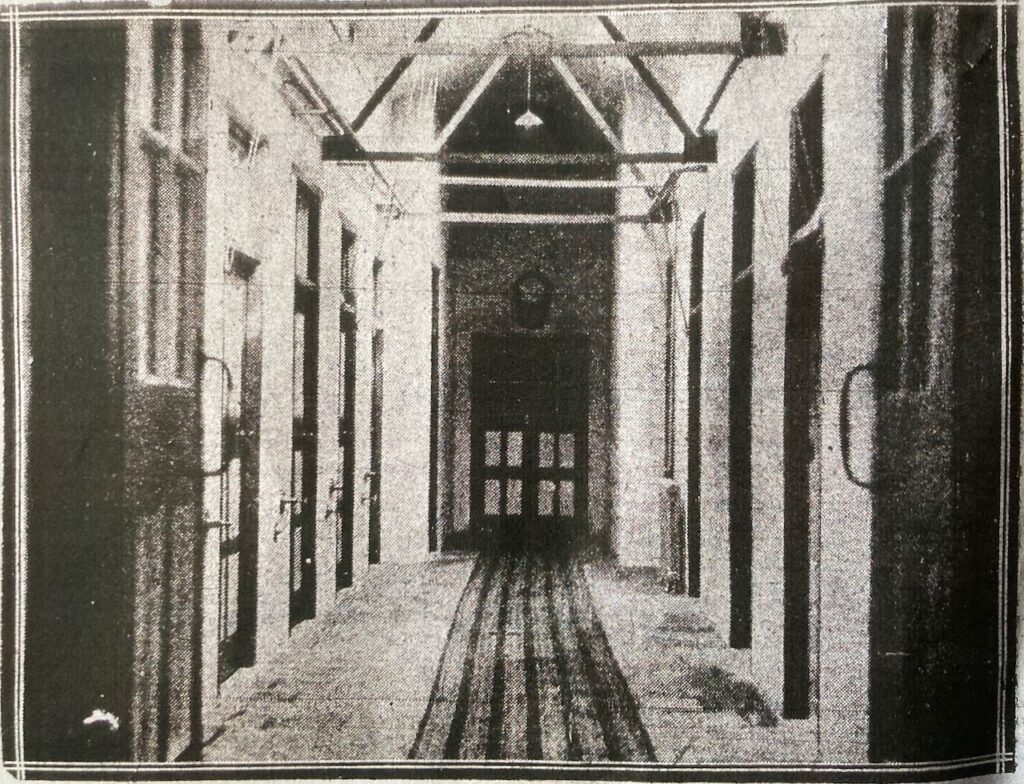
The long corridor at Paradise Square baths with the cubicles on either side photographed by The Oxford Illustrated Journal in May 1922 Oxford History Centre
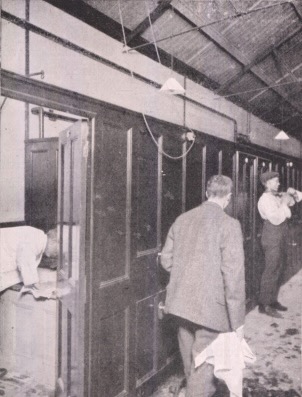
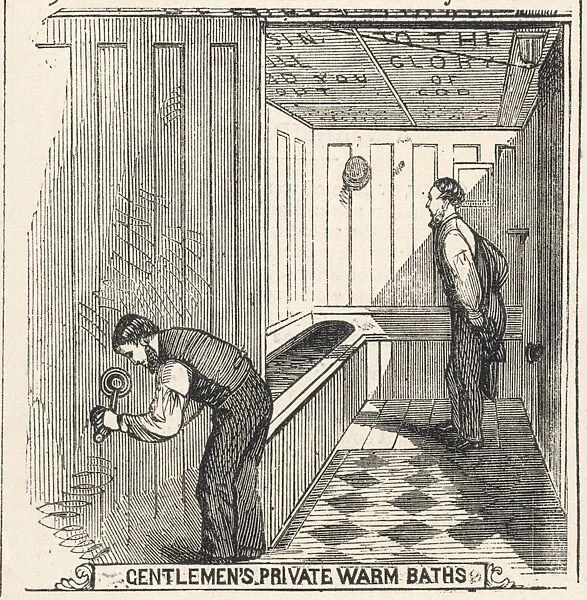
Photographs showing cleaning of some Paradise Square style public baths (left). And a cartoon demonstrating how the water for the baths was controlled from the outside of the cubicle (right).
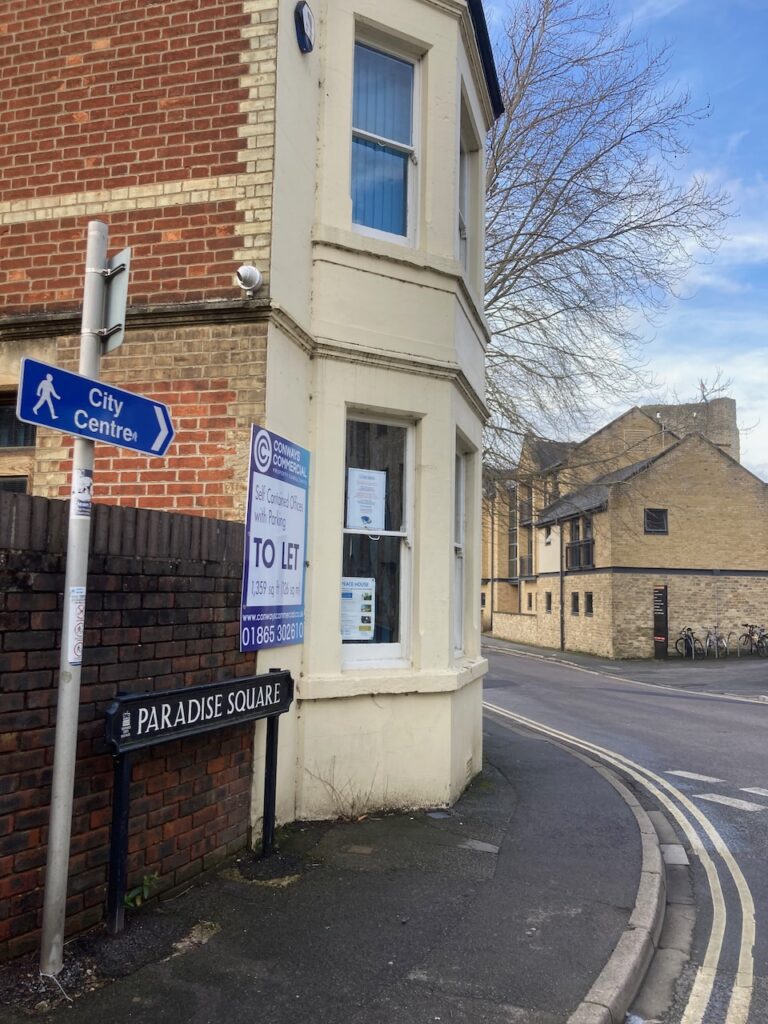
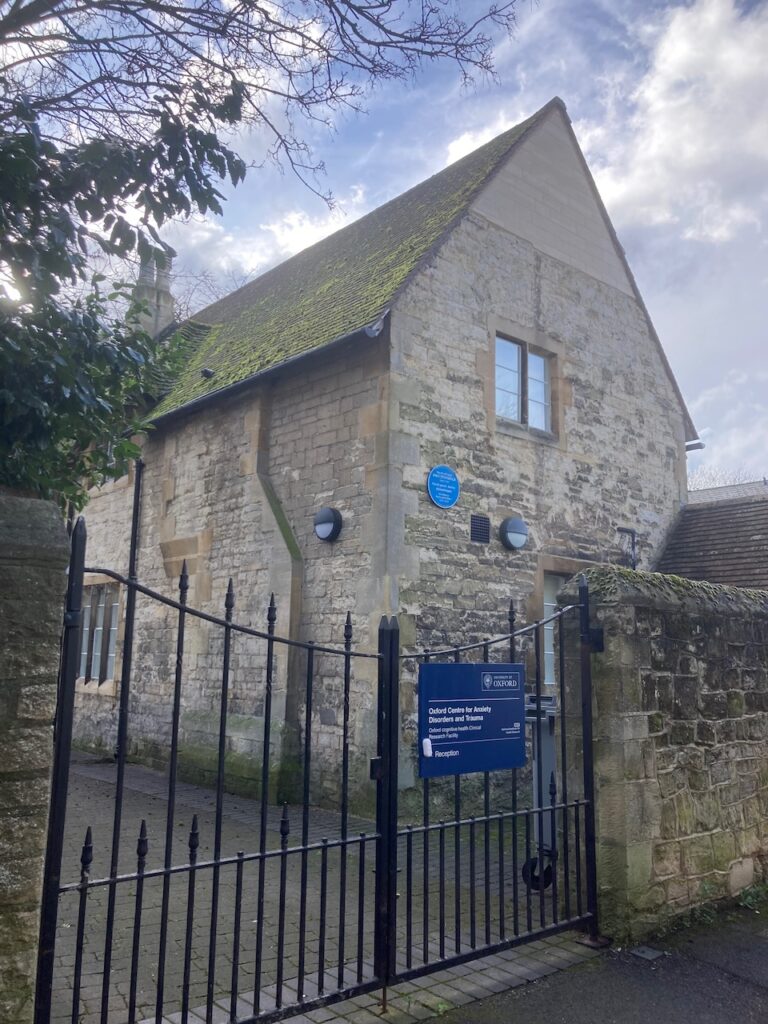
Paradise Square as it is today. The Old Rectory is pretty much all that is left of the Victorian development.
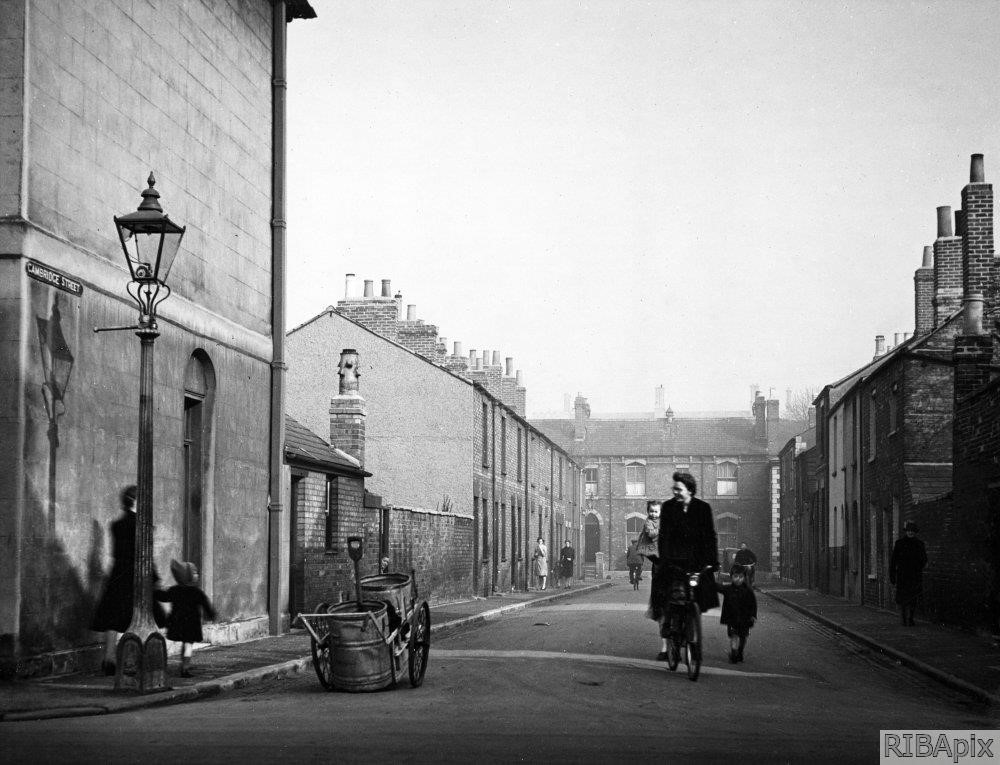
Cambridge Street, St Ebbe’s in 1945. It was demolished in 1966 to make way for the new Magistrate’s Court. Architectural Press Archive/RIBA Collections
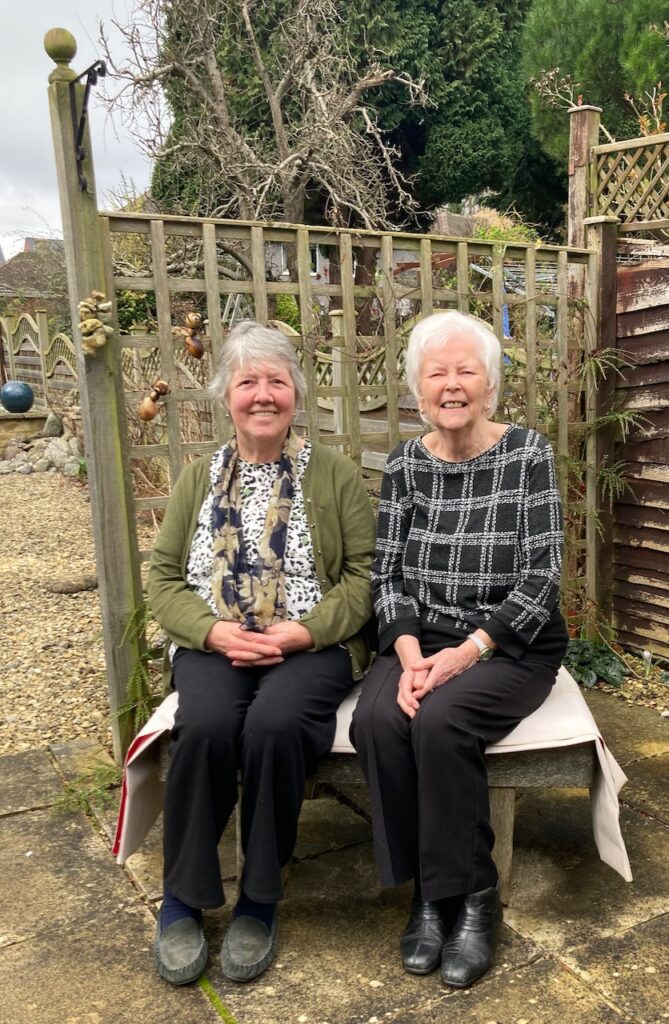
Pam (left) and her great friend Jan (right) in Pam’s garden.
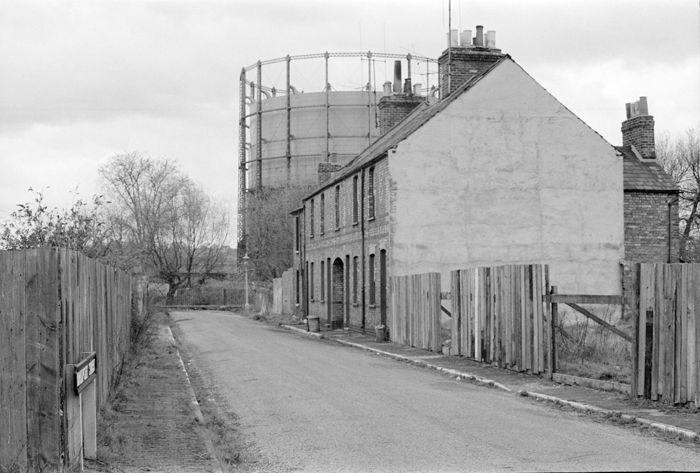
Jan’s house on Bridport Street with the gas works at the end just before the family were moved to Templar Road in Cutteslowe. Hers was one of the last houses in the area to be demolished.
Picture Oxon POX0101272
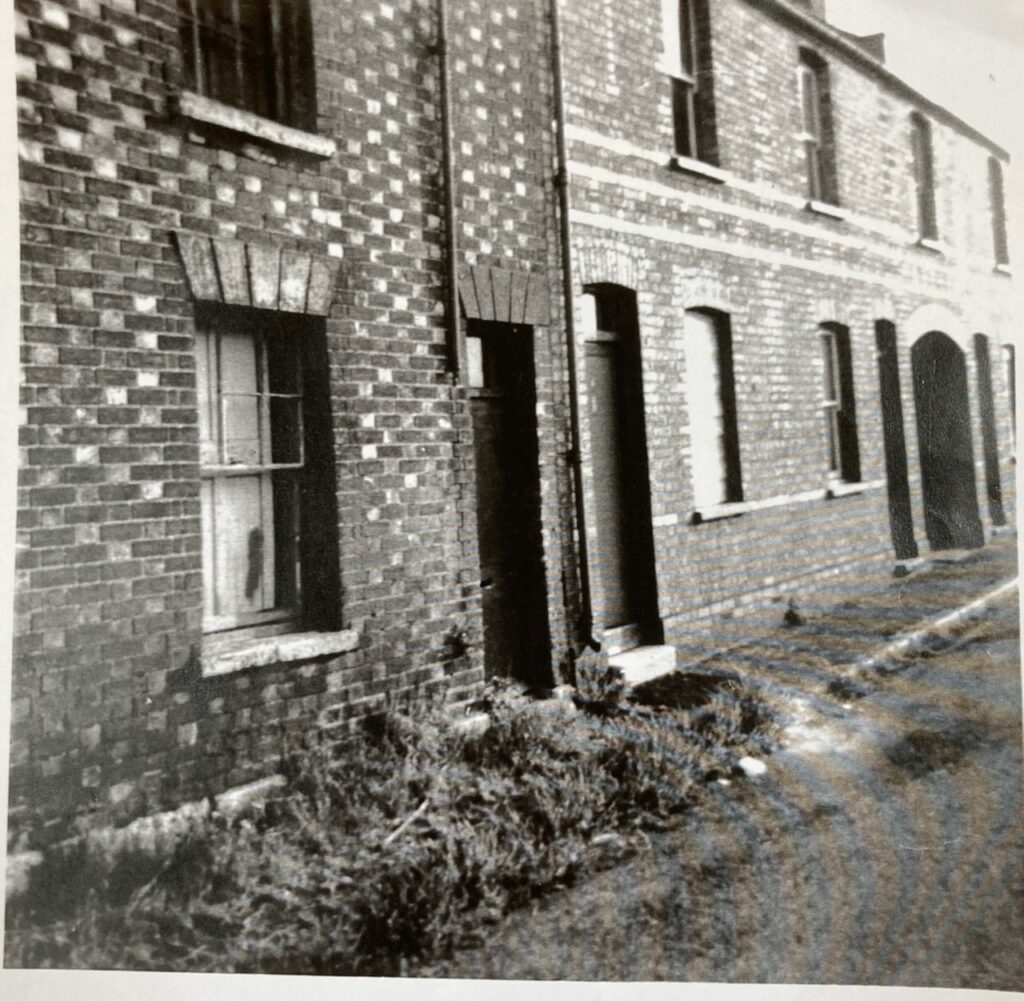
Boarded up houses before demolition. Jan’s house was at the back of the alleyway on the right of the picture.
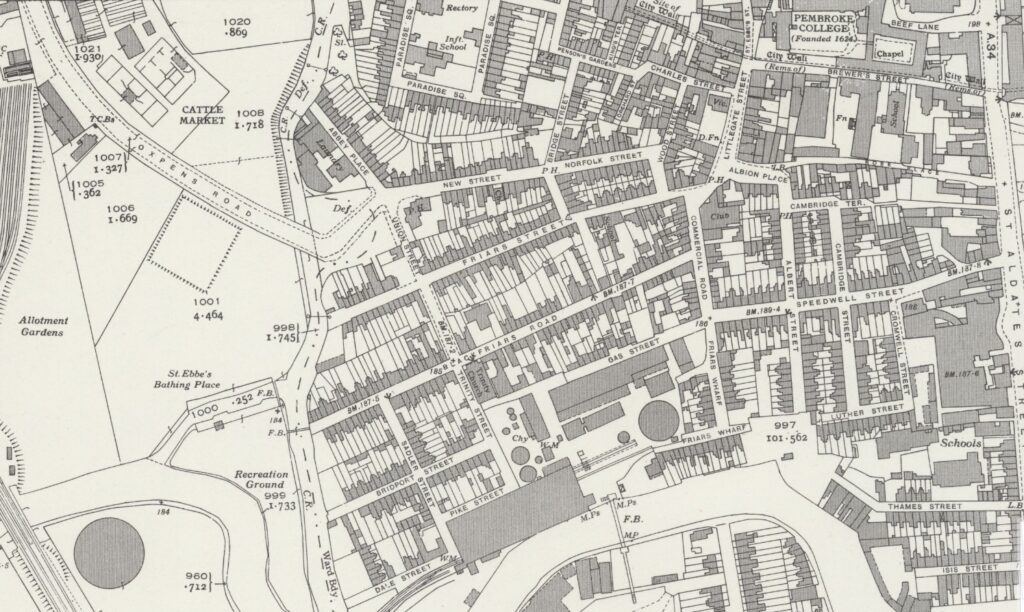
OS map of St Ebbe’s from 1939. Bridport Street is to the west of Gas Street and the gasworks. Jan remembers she and her sister made lots of shortcuts through the alleyways dividing houses on their way to school in Paradise Square.
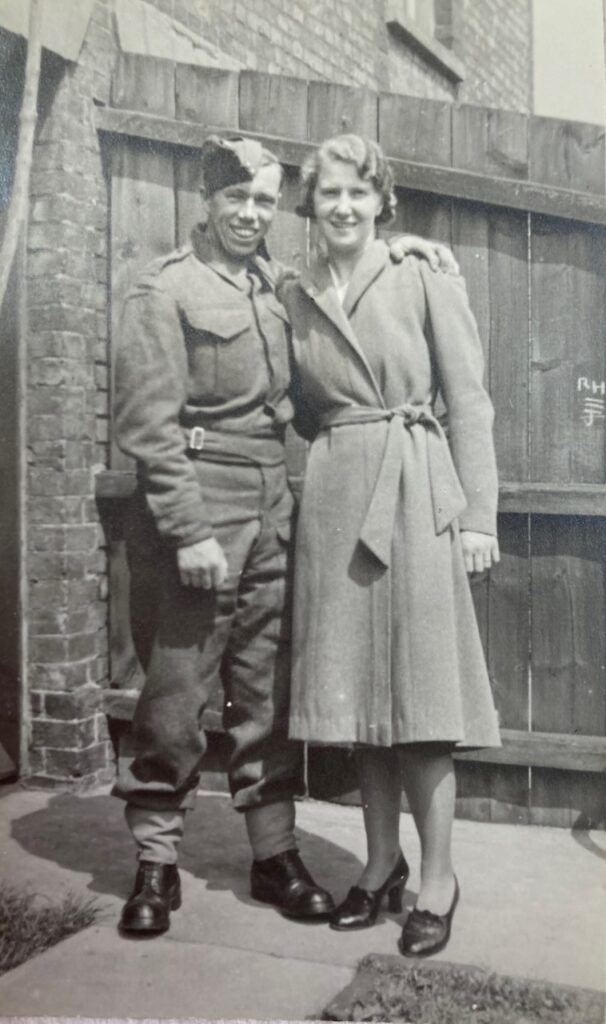
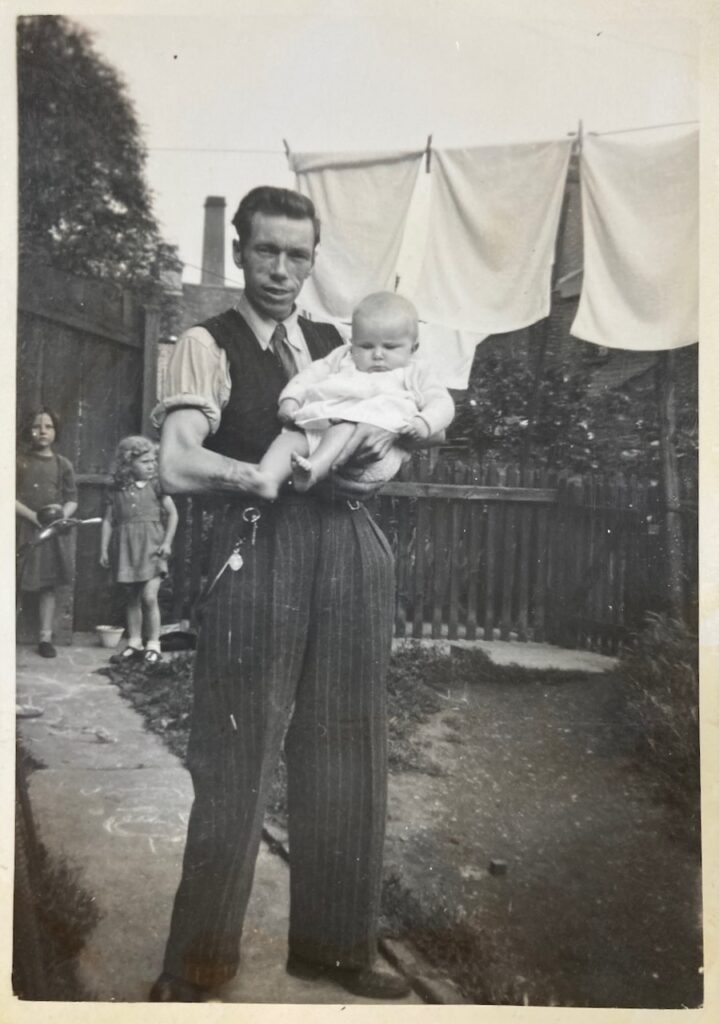
Jan’s parents Ronald and Vera Stewart outside their house at 26A Bridport Street (left). Ronald served during the war with the ‘Ox and Bucks’ regiment. During the time he spent time in Burma he contracted malaria. Ronald proudly holding Jan as a baby.
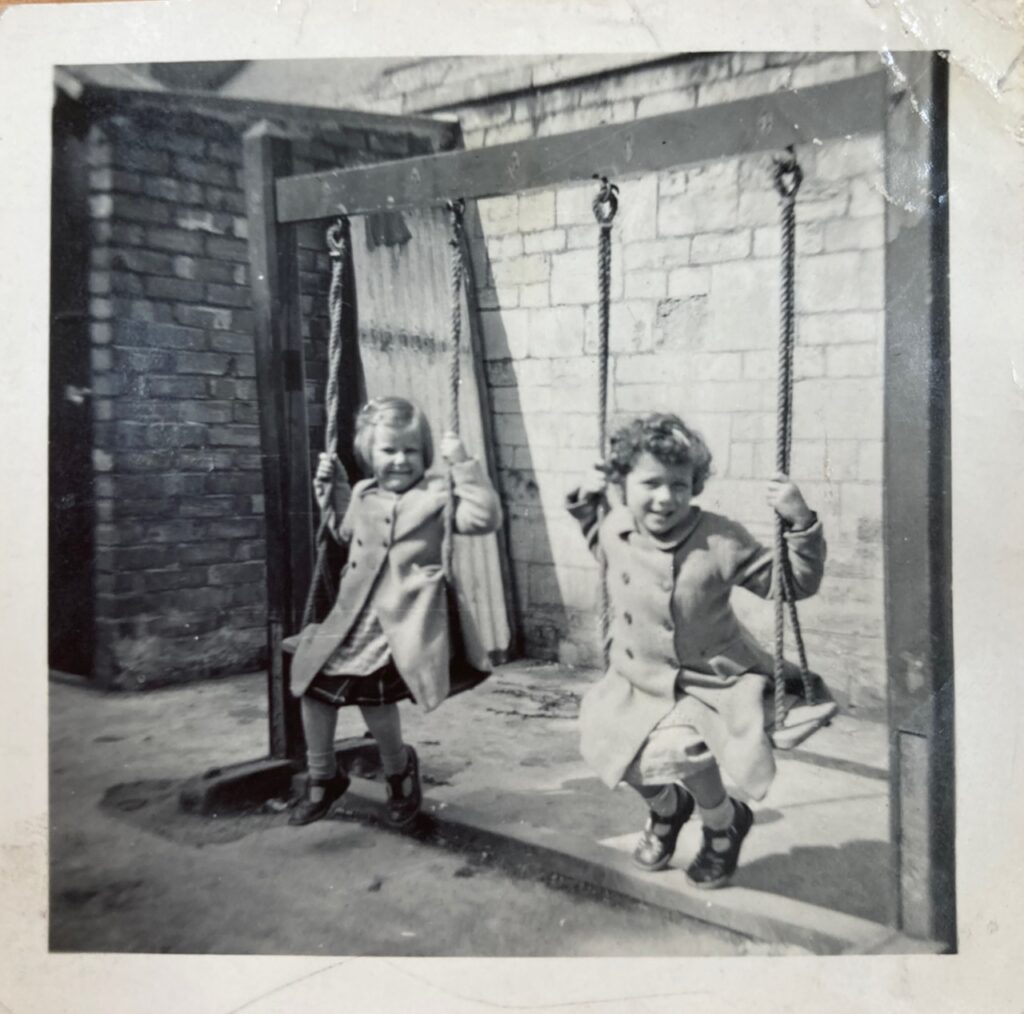
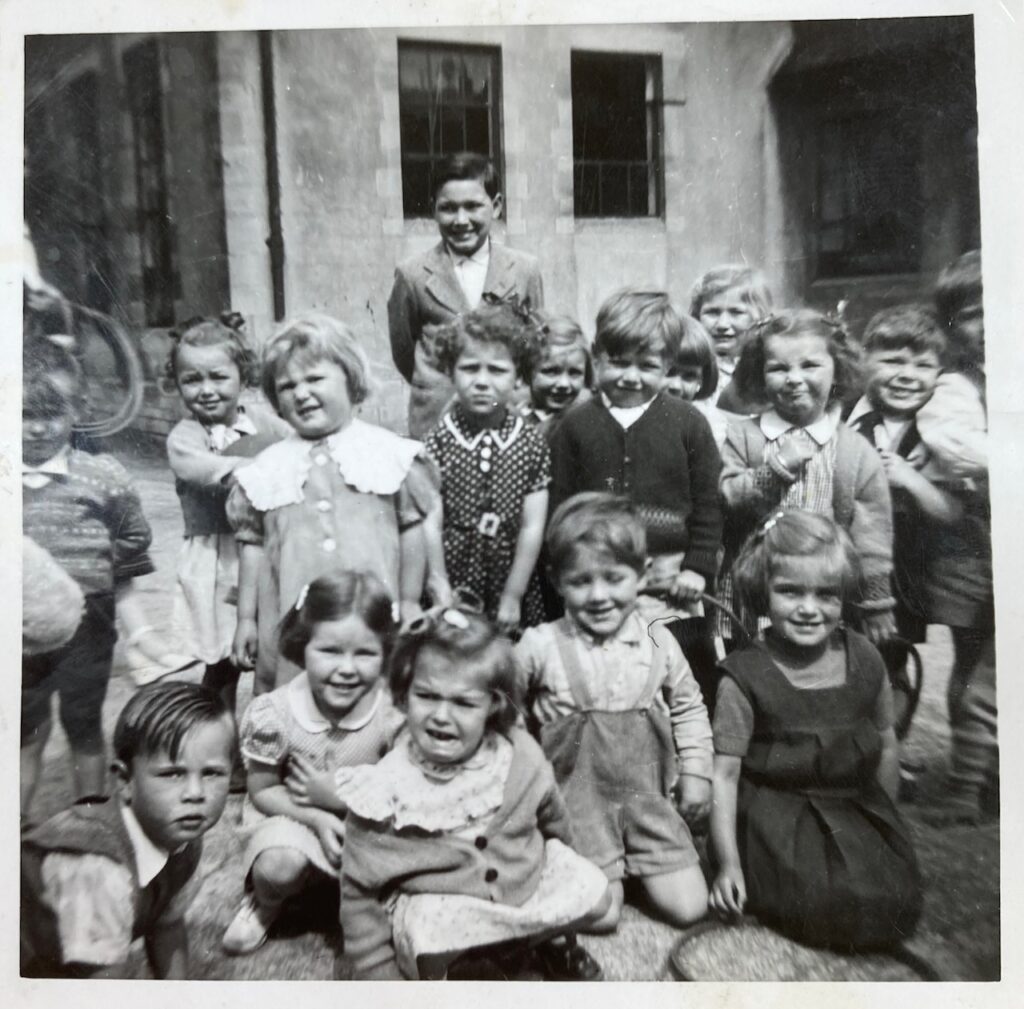
Jan and her sister Diane in the playground at St Ebbe’s Primary School, situated then in Paradise Square.
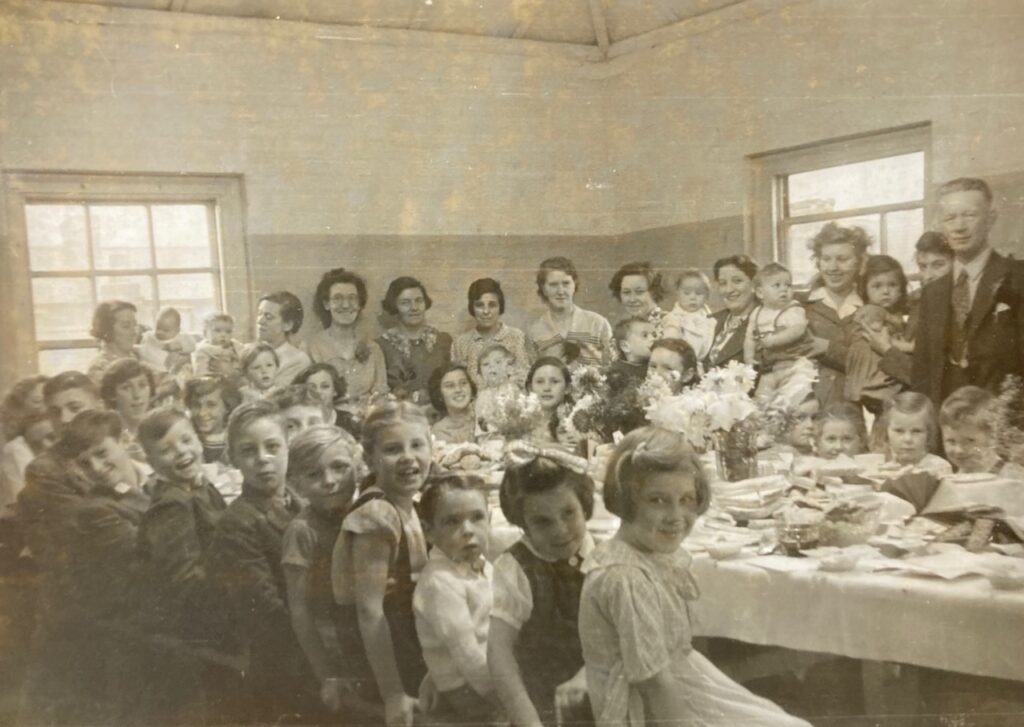
Jan at a party held at the Balliol Boys’ Club in Blackfriars Road. Set up by students from Balliol College in 1907, the aim was to provide activities such as boxing, football and summer camps for working boys in the area.
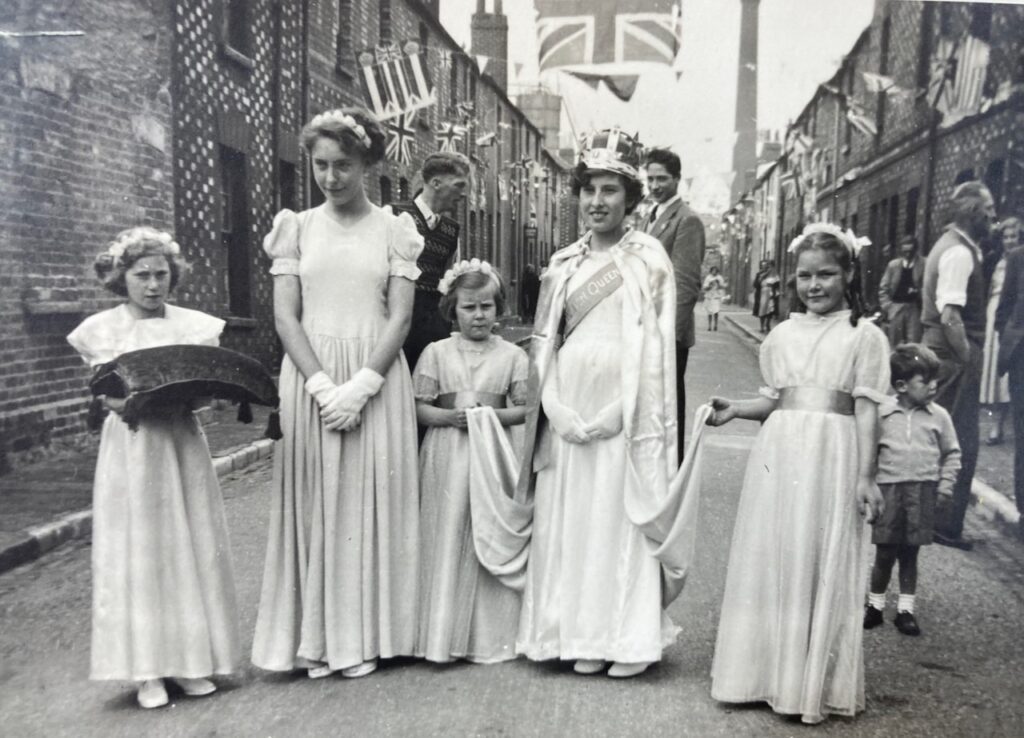
(From left) Di, June, Jan, Joan and Peggy at the Coronation Day celebrations in St Ebbe’s in 1953
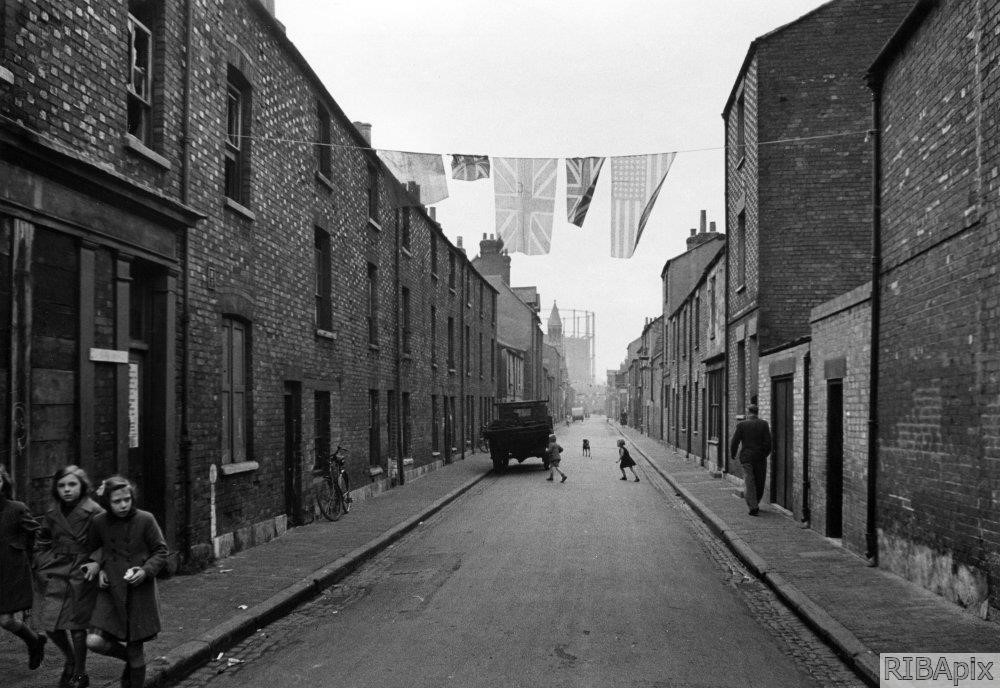
Blackfriars Road. You can see the spire of Holy Trinity Church further down on the left-hand side. This picture must have been taken soon after VE day in May 1945 as the flags are still up from the celebrations.
Architectural Press Archive/RIBA Collections
All photographs of the Stewart family courtesy of Janice Stewart
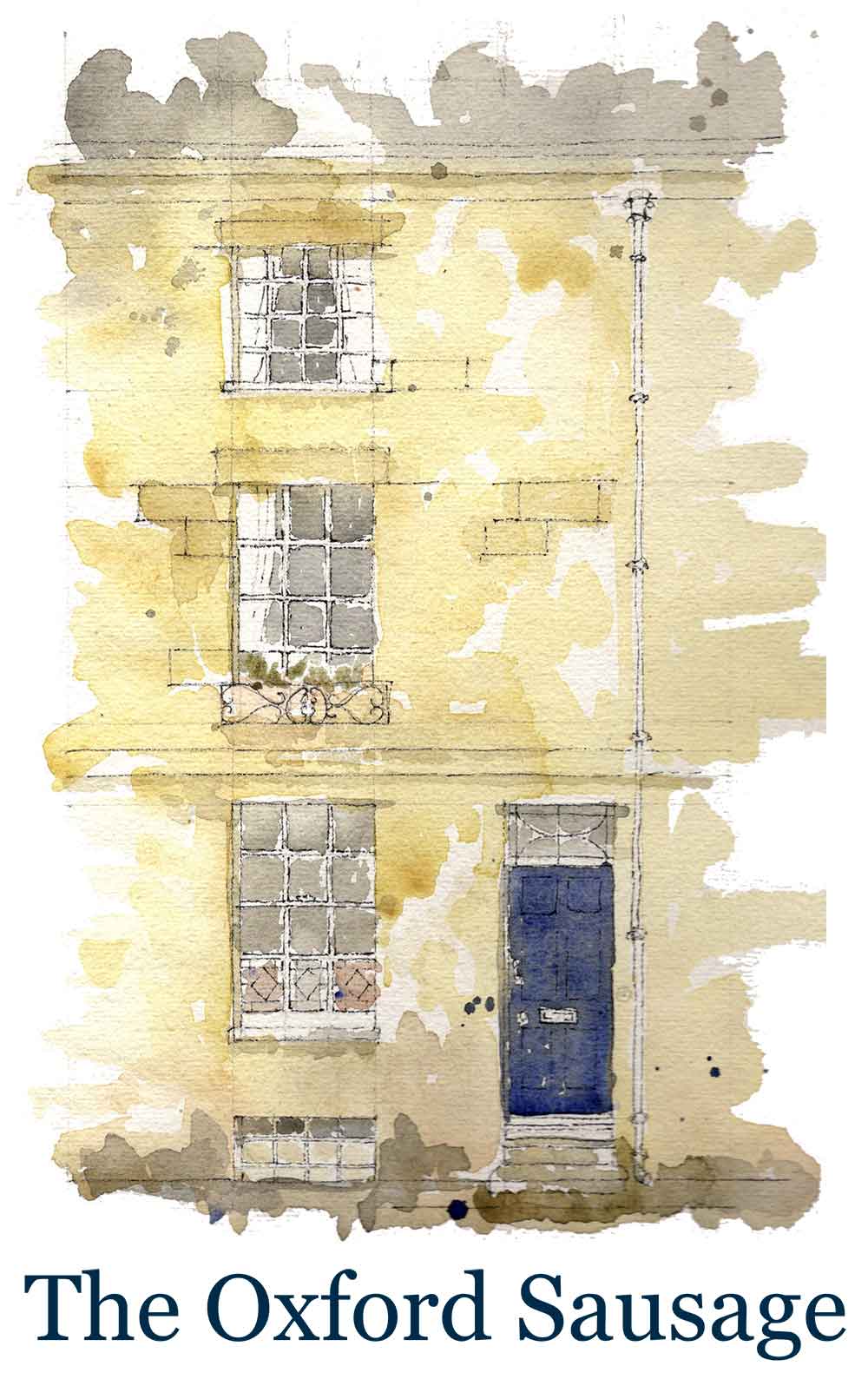
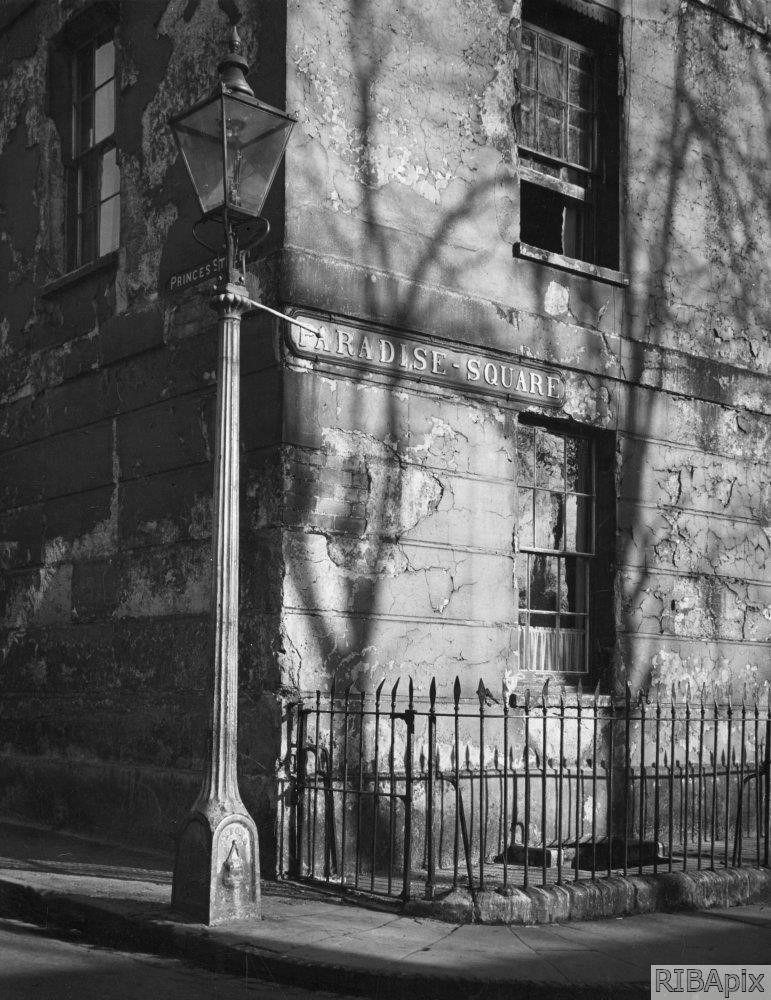
4 Comments
Join the discussion and tell us your opinion.
Such an interesting piece – full of warmth. It really brought Paradise Baths and the area surrounding it to life. So good to capture these memories.
I was so looking forward to reading this and it didn’t disappoint. So interesting. Bath houses have really piqued my interest. I didn’t know they existed until recently. I must have been lucky to have been bathed in a tin bath in front of a roaring fire. Does anyone have photos of the inside of Paradise Square bath house? I can’t imagine how they worked. On Tuesday I will be seeing the actual plan for the bath house. Hope I can take photos. If you are interested in seeing the footprint of Paradise Square bath house, do let me know.
Great article. The town planners of the 1960s did more damage to many British towns and cities than Hitler’s bombs.
I was really interested to see pictures of the baths recently. My mother, now deceased, lived in a council house in New Street until she married in 1939. Her father John Harris worked for the council and was in charge of the baths until he retired. My mum used to help by filling the baths then cleaning them afterwards.
Their house was very unusual in that it had a downstairs passage running through it which Grandad had to unlock twice a day at both ends to allow parents and children easy access to the school in Paradise Square. The passageway is shown on an ordnance survey map dated 1898. From the map it looks as though the house had been built that way as it looks wider than the other houses in the street so the larger upstairs would compensate for the inconvenience.